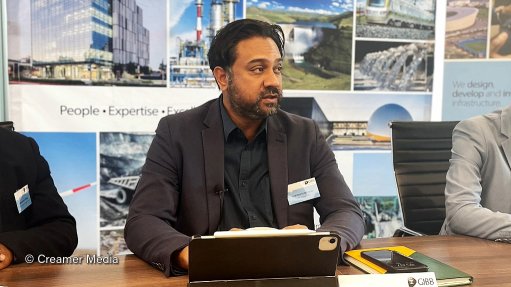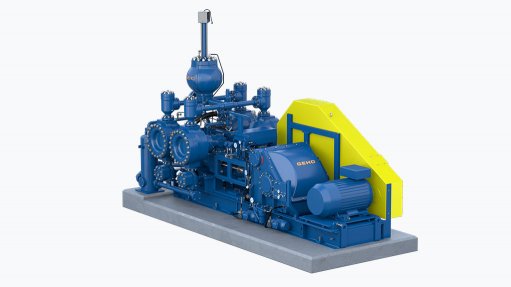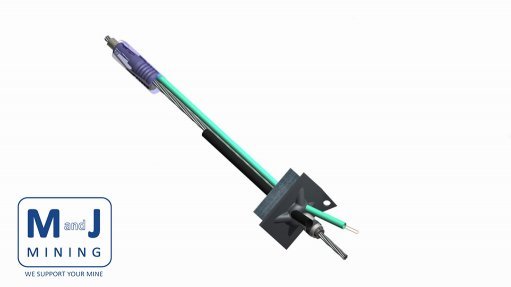EY unpacks value of smart meter management, digital integration as power system decentralises

A panel of speakers unpack the value that digital technologies could bring to electricity systems in this South African-German Energy Partnership webinar
As the South African energy sector undergoes a profound shift from traditional, centralised power generation to a more decentralised but interconnected one, digitally integrated systems can optimise production, strengthen grid management, improve efficiency and enable real-time decision-making, consultancy EY said this week.
EY senior specialist consultant Rashid Khan unpacked the value that digital technologies could bring to electricity systems that were more demanding on the grid and required smart balancing for stability.
He discussed solutions such as advanced metering infrastructure (AMI) and how it could contribute to grid stability, operational efficiency and consumer engagement during a webinar hosted by Creamer Media on October 16, which was sponsored by the South African-German Energy Partnership.
Khan mentioned that the global energy sector was becoming more interconnected through digital technologies, with power and data flowing in both directions.
“Worldwide, smart grids are enabling the evolution towards bi-directional flows through advanced communication and sensor networks that support real-time energy management.”
In South Africa’s case, the country has set out to modernise an aging power system, expand access to affordable electricity and integrate the rapidly growing renewable energy generation capacity.
“Digital transformation is reshaping how energy systems operate, as the electricity market becomes more open and accessible to operators, traders, independent power producers and distributors of all kinds,” Khan stated.
For context, he said South Africa’s electricity system became liberalised through various legislative reforms and the lifting of licensing requirements to enable private power generation over the past three years.
Soon the country will experience a new electricity market with different offtakers and distributors, each needing to comply with sustainability targets.
However, utilities, municipalities and large property companies have to enable this energy transition while maintaining network safety, stability and quality.
Smart metering was the key underlining technology that allowed for the grid to communicate with consumers and utilities, Khan pointed out.
To this end, AMI is an integrated system of smart meters, communication networks and data management systems that enable this two-way communication between utilities and consumers.
“A successful AMI programme hinges on the seamless deployment of smart meters at a customer’s premises for remote meter reading, outage monitoring and tamper detection.
“It is also required that a communication network connects smart meters to head-end systems effectively, which manage data communications between smart meters and other information systems such as master data management systems, order management systems and document management systems.”
Khan suggested an updated meter data management system was needed to provide a platform for validation and distribution of the meter data to other applications. “A successful AMI deployment should ultimately have a well-executed communications plan for the customer. The customer must be able to receive outage notifications, meter readings and billing reports.”
AMI BENEFITS
AMI can be used to detect anomalies such as meter tampering or energy theft, which ensures accurate billing and reduced financial losses for utilities and municipalities.
It can also provide accurate data for revenue collection and load management, while increasing grid resilience and reducing blackouts owing to load reduction requests that can be sent out early by distributors to smart meter customers.
AMI further allows the transmission operator to monitor renewable-energy input at high voltage and balance supply and demand using AMI data to maintain grid reliability.
Moreover, distributors can roll out real-time pricing tariffs, enabling customers to reduce energy costs by shifting consumption to low-demand periods.
Additionally, aggregators can use data from multiple utilities to provide benchmarking, performance monitoring and actionable insights, which helps to improve energy efficiency and reduce costs.
Producers and consumers with AMI-enabled distributed energy resources, such as solar PV and batteries or electric vehicles (EVs), can participate in flexibility markets and trade energy seamlessly with other entities, which fosters a decentralised energy system.
Consumers also receive daily energy use reports and can adjust their consumption patterns to save on costs.
In turn, policymakers can leverage aggregated AMI data to forecast electricity demand and prioritise grid upgrades for high-growth areas, avoiding future capacity issues.
In future, municipalities can use AMI to monitor EV charging patterns and adjust grid operations to manage peak demand from EV users.
CHALLENGES WITH CHANGE MANAGEMENT
Having studied how smart metering programmes run in various other countries, EY determined the biggest challenges of such technology transitions as being cost overruns; risks related to process, people and systems; installation errors; changes to existing IT systems; and how to effectively manage multiple vendors.
This will be especially challenging for municipalities, given their lengthy governance processes and often incapacitated IT or other technical departments.
The challenges were often a result of the inherent complexity of transforming traditional utility operations. Khan explained metering had generally been done manually or mechanically, but that changed with smart metering and the host of data that became available.
AMI typically introduced changes to how a business operated and required new technical capabilities to understand smart meters, communication networks and a meter management system. “AMI is not just an infrastructure rollout, rather it is a large transformational programme that digitalises operations,” Khan said.
He is optimistic, however, that every challenge associated with AMI, including strategy formation, funding, procurement, technical capability and business readiness, has actionable interventions.
“With the right planning, business case outline, training and stakeholder engagement, much operational value can be extracted from AMI data,” he noted.
To assist customers and utilities such as municipalities or private distributors of electricity, EY has developed a smart metering framework that helps clients make the transition to the digital grid easier, by navigating the complexities associated with AMI.
EY has successfully deployed AMI at various projects in South Africa and abroad, with the implementation framework involving eight workstreams that span six phases.
Khan warned that utilities and other stakeholders could not simply approach a technology provider without understanding the business use case of the organisation and setting systems up according to requirements – given the massive step-change required in communication and IT infrastructure companywide.
NATIONAL OPPORTUNITY
Khan said installing smart meters and smart breakers for large power users (LPUs) was a particularly significant opportunity in South Africa. He noted that, with a targeted programme that ensured every LPU had a smart meter and smart breaker, the country could quickly digitise between 70% and 80% of the national grid.
South Africa has about 150 000 LPUs, which is an easier undertaking than trying to install ten-million smart meters for residents and businesses throughout the country.
Khan estimates the benefits of having smart meters installed for LPUs could surpass R10-billion over a decade, in the form of reduced non-technical losses, reduced revenue losses, improved operational costs and energy flow optimisation, which are all crucial for municipalities to improve service delivery.
Khan suggested pilot projects could be launched in key metros to demonstrate the feasibility of smart meter rollouts. He advocated for policies mandating smart metering, since it was a massive opportunity to improve energy monitoring and management in South Africa.
He concluded that a national AMI platform, aggregating data from 150 000 LPUs, which accounted for upwards of 70% of the total energy load, could address challenges such as grid inefficiencies, demand-side management and renewable-energy integration.
Article Enquiry
Email Article
Save Article
Feedback
To advertise email advertising@creamermedia.co.za or click here
Comments
Press Office
Announcements
What's On
Subscribe to improve your user experience...
Option 1 (equivalent of R125 a month):
Receive a weekly copy of Creamer Media's Engineering News & Mining Weekly magazine
(print copy for those in South Africa and e-magazine for those outside of South Africa)
Receive daily email newsletters
Access to full search results
Access archive of magazine back copies
Access to Projects in Progress
Access to ONE Research Report of your choice in PDF format
Option 2 (equivalent of R375 a month):
All benefits from Option 1
PLUS
Access to Creamer Media's Research Channel Africa for ALL Research Reports, in PDF format, on various industrial and mining sectors
including Electricity; Water; Energy Transition; Hydrogen; Roads, Rail and Ports; Coal; Gold; Platinum; Battery Metals; etc.
Already a subscriber?
Forgotten your password?
Receive weekly copy of Creamer Media's Engineering News & Mining Weekly magazine (print copy for those in South Africa and e-magazine for those outside of South Africa)
➕
Recieve daily email newsletters
➕
Access to full search results
➕
Access archive of magazine back copies
➕
Access to Projects in Progress
➕
Access to ONE Research Report of your choice in PDF format
RESEARCH CHANNEL AFRICA
R4500 (equivalent of R375 a month)
SUBSCRIBEAll benefits from Option 1
➕
Access to Creamer Media's Research Channel Africa for ALL Research Reports on various industrial and mining sectors, in PDF format, including on:
Electricity
➕
Water
➕
Energy Transition
➕
Hydrogen
➕
Roads, Rail and Ports
➕
Coal
➕
Gold
➕
Platinum
➕
Battery Metals
➕
etc.
Receive all benefits from Option 1 or Option 2 delivered to numerous people at your company
➕
Multiple User names and Passwords for simultaneous log-ins
➕
Intranet integration access to all in your organisation



















